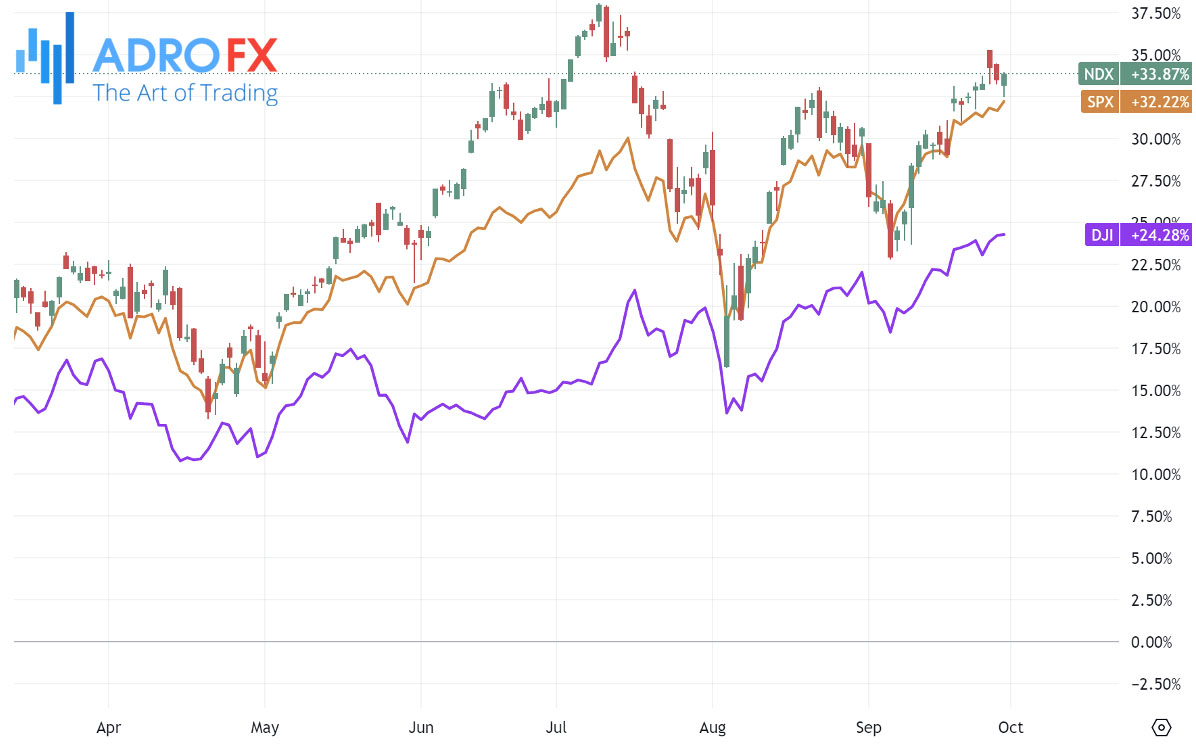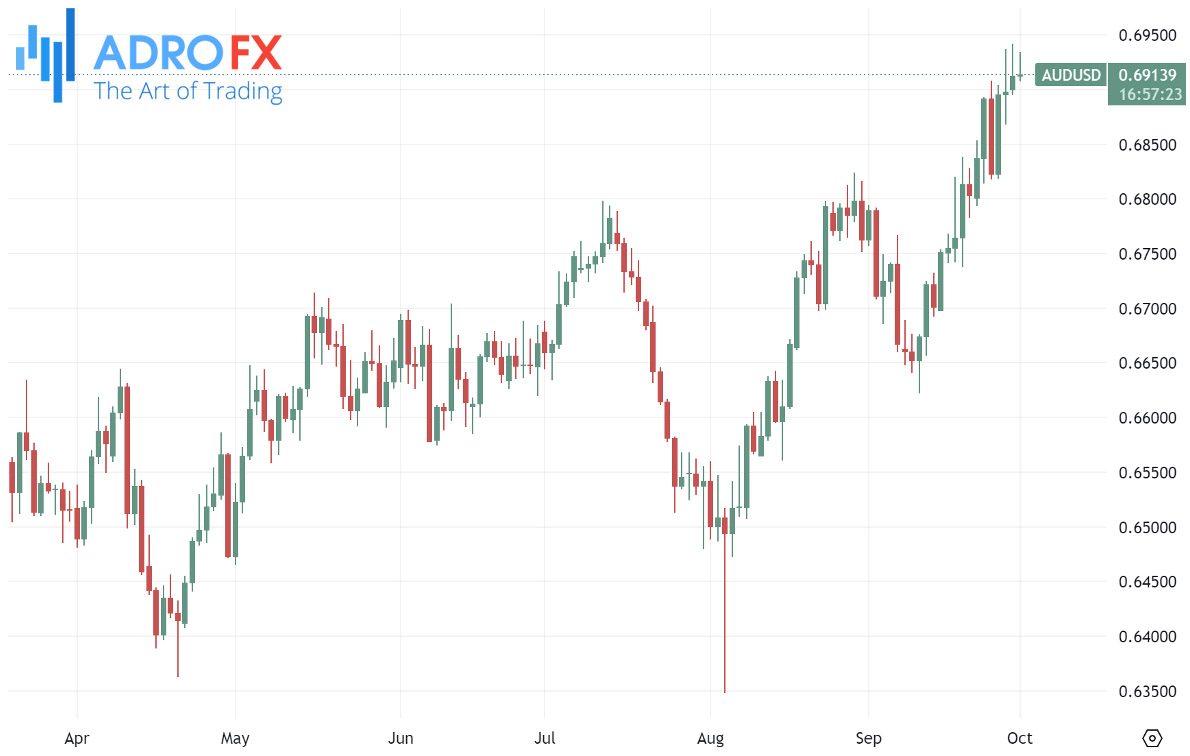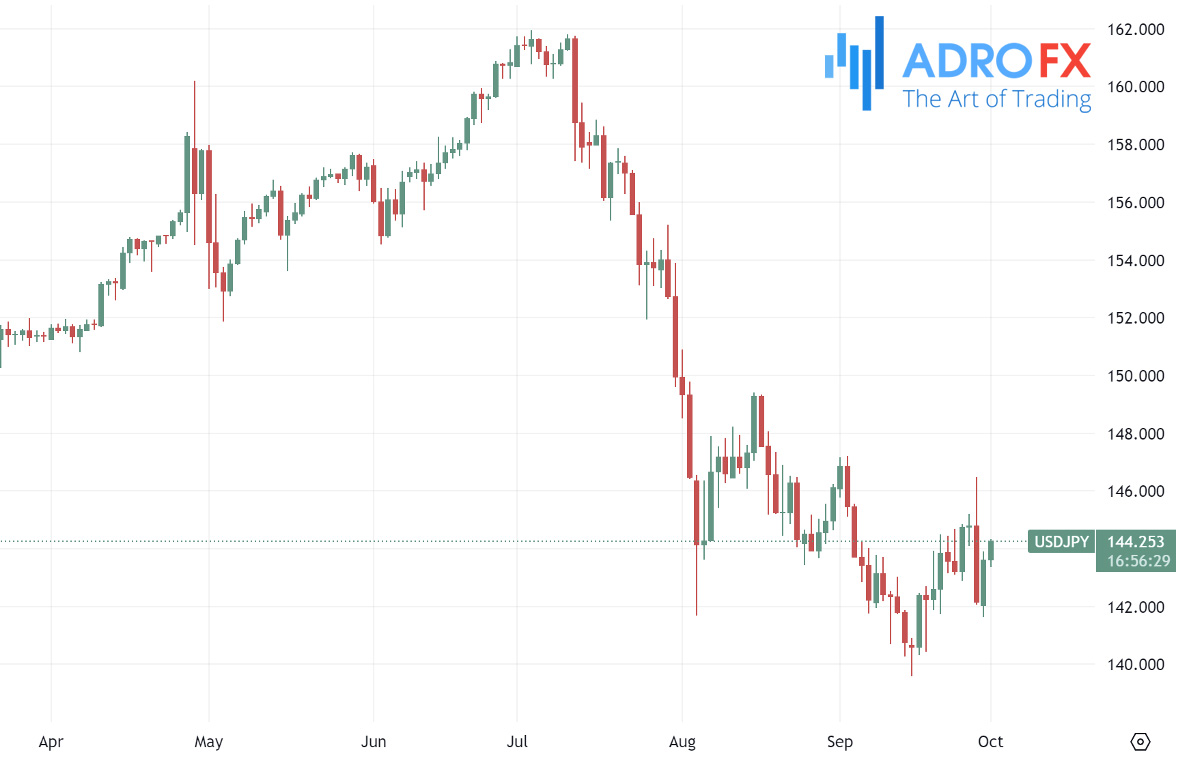Markets Rally on Hopes for Fed Rate Cuts; Gold and AUD Hold Firm Amid Global Economic Shifts | Daily Market Analysis

Key events:
- Eurozone - CPI (YoY) (Sep)
- USA - S&P Global US Manufacturing PMI (Sep)
- USA - ISM Manufacturing PMI (Sep)
- USA - ISM Manufacturing Prices (Sep)
- USA - JOLTs Job Openings (Aug)
The S&P 500 ended Monday with gains, closing higher and capping off a strong third quarter. Investor optimism was bolstered by the potential for further interest rate cuts, as Federal Reserve officials continue to hint at more easing.
The S&P 500 climbed 0.3%, the Dow Jones Industrial Average added 17 points (or 0.04%), and the NASDAQ Composite increased by 0.4%. Over the quarter, the S&P 500 surged 5%, rebounding from the significant selloff on August 5, which was sparked by recession fears that have since subsided due to encouraging economic data.

In contrast, gold prices dropped for the second straight day on Monday, as optimism surrounding China's stimulus measures and the hawkish remarks from Federal Reserve Chair Jerome Powell prompted profit-taking after gold's rally to record highs last week. The decline found support near the $2,625–$2,624 zone. Despite this short-term pullback, gold registered its strongest quarterly gains since early 2020 and remains on track for further growth.

Weaker US economic data and a continued slowdown in inflation are likely to allow the Fed to implement additional rate cuts. Along with growing geopolitical tensions in the Middle East, which could lead to broader conflict, these factors should continue to increase gold’s appeal as a safe haven. Expectations that China's stimulus measures will boost physical demand are also attracting buyers during Tuesday’s Asian session, maintaining a positive near-term outlook for gold ahead of key US economic reports.
On Tuesday, the Australian Dollar held its ground against the US Dollar, supported by stronger-than-expected retail sales data. The Australian Bureau of Statistics (ABS) reported a 0.7% month-over-month increase in August, surpassing market forecasts of a 0.4% rise.

The AUD is further supported by the Reserve Bank of Australia's hawkish stance on interest rates. The RBA has held its cash rate steady at 4.35% for the seventh consecutive meeting, emphasizing the need for tight policies to rein in inflation. Additionally, China’s stimulus measures are boosting demand in Australia’s largest trading partner, driving up commodity prices and strengthening the AUD.
However, the AUD/USD’s gains may be tempered by the stronger US Dollar, which has been supported by Fed Chair Powell’s recent comments. On Monday, Powell suggested that future rate cuts would be gradual, noting that the recent half-point rate reduction should not be seen as a signal for further aggressive moves. He indicated that future changes would likely be more modest.
The New Zealand Dollar slipped to around 0.6340, breaking a three-day winning streak during early Tuesday trading. The US Dollar's modest rebound, following Powell’s remarks, has weighed on the NZD/USD pair. Investors are now awaiting the release of the US September ISM Manufacturing Purchasing Managers Index (PMI) on Tuesday.

Powell’s statements indicated that further rate cuts are likely, though their scale and timing will depend on the economy's performance. He emphasized that the Fed’s current focus is on sustaining a healthy economy and job market, rather than trying to stave off a recession or rescue a faltering economy.
Interest rate futures show a 35.4% chance of a half-point rate cut in November, while a quarter-point reduction is seen as 64.6% likely, according to the CME FedWatch Tool. Investors will also closely watch US labor market data due on Friday, with expectations of 140,000 job additions in September and an unemployment rate steady at 4.2%.
Optimism around further stimulus measures from China may help limit losses for the New Zealand Dollar. China’s central bank recently announced it would encourage banks to lower mortgage rates on existing home loans before October 31, as part of broader efforts to support the property market. This has provided some support for NZD/USD, given China’s role as New Zealand’s largest export partner.
Meanwhile, the USD/JPY pair has continued its upward trend, rebounding from the 141.65 mark a nearly two-week low) and gaining traction for the second consecutive day on Tuesday. This movement pushed spot prices above 144.00 during the Asian session, driven by several factors.

The US Dollar is benefiting from Powell’s hawkish tone, which has tempered expectations of a large rate cut in November. On the other hand, the Japanese Yen remains under pressure after incoming Prime Minister Shigeru Ishiba indicated that the Bank of Japan must maintain accommodative policies to support Japan’s fragile economic recovery.
Ishiba also announced plans to call for a general election on October 27. Additionally, a broader bullish sentiment in global markets is reducing demand for the safe-haven Yen, further supporting USD/JPY gains.
On the economic front, Japan’s unemployment rate dropped more than expected, falling to 2.5% in August from 2.7% in July. Additionally, the BoJ’s Tankan survey showed stable sentiment among Japan’s major manufacturers, with slight improvements among large non-manufacturers. However, these developments have done little to boost the Yen or impact the USD/JPY pair, leaving room for further gains.
Investors are now focused on US economic reports, including the ISM Manufacturing PMI and JOLTS Job Openings data. These figures, along with speeches from key Federal Open Market Committee members, will shape US Dollar demand and provide trading opportunities in the USD/JPY pair. Moreover, the upcoming Nonfarm Payrolls (NFP) report will be pivotal in determining the next major market move.








